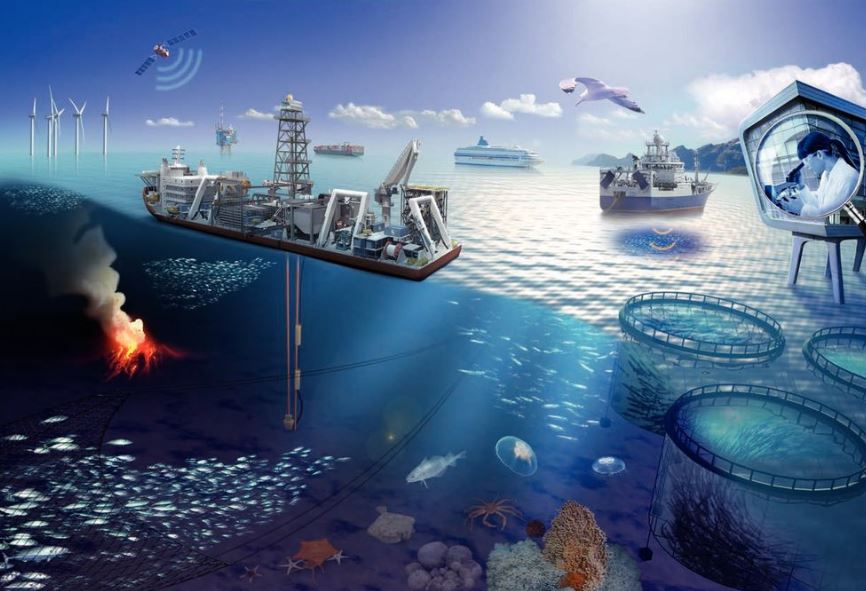Revitalising BIMSTEC
Context:
As Prime Minister Narendra Modi prepares to attend the Bay of Bengal Initiative for Multi-Sectoral Technical and Economic Cooperation (BIMSTEC) summit this week, India’s diplomatic efforts are focused on two key objectives: addressing the earthquake disaster in Myanmar and reinvigorating the BIMSTEC forum.
More on News
- While India leads international relief and rehabilitation efforts in Myanmar, a more pressing long-term challenge lies in strengthening BIMSTEC’s effectiveness.
- With its formal structure now in place, BIMSTEC is positioned to collaborate with other regional and global entities.
BIMSTEC
BIMSTEC is a regional multilateral organisation established on June 6, 1997, through the Bangkok Declaration. It aims to foster cooperation among countries bordering the Bay of Bengal. The organisation connects South Asia and Southeast Asia, acting as a bridge between these regions. Its headquarters is located in Dhaka, Bangladesh, and its official language is English. BIMSTEC comprises seven member nations: Bangladesh, Bhutan, India, Myanmar, Nepal, Sri Lanka and Thailand. BIMSTEC represents a region with a combined population of 1.73 billion (22% of the global population) and a GDP of $5.2 trillion (2023).
Moving Beyond SAARC’s Shadow
- Replacement of SAARC: BIMSTEC is often unfairly perceived as a replacement for the South Asian Association for Regional Cooperation (SAARC), largely due to the present government’s renewed emphasis on the Bay of Bengal forum after SAARC’s stagnation post-2014.
- Pakistan Obstructionism: Pakistan’s obstructionism, particularly its withdrawal from connectivity agreements at the last minute, has rendered SAARC ineffective.
- Willingness to Engage: Unlike SAARC, where Pakistan’s reluctance hinders regional cooperation, BIMSTEC members share a greater willingness to engage in regional integration.
- However, structural challenges persist, necessitating a pragmatic approach to BIMSTEC’s development.
Historical Context: The Bay of Bengal’s Evolving Geopolitical Role
- Strategic Region: The Bay of Bengal has long been a natural economic and strategic region, historically unified under British colonial rule, which projected power across its waters from India to Southeast Asia.
- Became Periphery: However, the decline of British influence, the rise of Imperial Japan, and the shifting geopolitical landscape of the Cold War relegated the Bay of Bengal to the periphery of global politics.
- The economic isolation of post-colonial India and Myanmar further disrupted natural economic ties, preventing the region from realising its full potential.
- Rise of China: Today, China’s rise, its increasing maritime presence, and intensifying US-China competition are once again making the Bay of Bengal a crucial geopolitical arena.
- India’s Interests: India’s own maritime push and strategic interest in counterbalancing China’s influence have brought renewed attention to BIMSTEC’s role in regional cooperation.
Challenges to BIMSTEC’s Progress
- While BIMSTEC does not suffer from a singular veto-wielding member like Pakistan in SAARC, challenges remain.
- The lack of deep mutual trust among member states, unresolved bilateral disputes—such as those between Bangladesh and Myanmar—and Naypyidaw’s weakened control over its territory hamper regional connectivity efforts.
- Myanmar’s strategic location as a bridge between South and Southeast Asia remains underutilised due to ongoing internal instability.
- These factors suggest that while BIMSTEC’s progress may be slow, its trajectory remains positive, unlike SAARC, which has failed to gain meaningful traction.
India’s Strategic Approach to BIMSTEC Revitalisation
- Strengthening Regional Institutions: India must continue investing in BIMSTEC’s institutional framework, fostering economic integration, and ensuring the forum’s operational effectiveness.
- Enhancing Bilateral Engagements: While strengthening BIMSTEC at the regional level, India must also pursue enhanced bilateral trade and connectivity with individual member states.
- Prime Minister Modi’s bilateral meetings with Thailand and Sri Lanka during this trip underscore the importance of such engagements.
- Addressing challenges in India-Bangladesh relations, particularly under the new Bangladeshi leadership, is also crucial for regional stability.
- Leveraging Unilateral Initiatives: India must recognise the power of unilateral actions in driving regional integration.
- Thailand’s recent decision to offer visa-free entry to Indian travellers has significantly boosted bilateral engagement—something years of BIMSTEC discussions on connectivity failed to achieve.
- Similarly, India can leverage its growing economic strength (now approaching $4 trillion GDP) to introduce independent trade and connectivity measures that encourage deeper regional cooperation.
- Role of Maritime Development: A crucial aspect of India’s long-term Bay of Bengal strategy is accelerating national maritime development.
- Key steps include transforming the Andaman and Nicobar Islands into a regional economic and security hub, modernising port infrastructure along the eastern seaboard, improving maritime regulations, and enhancing the ease of doing business in the sector.


